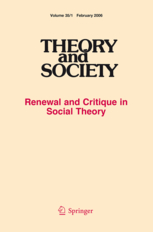While I study a lot of different topics, my research generally investigates how our social environments might affect the ways that we think and behave. I am especially interested in understanding what we learn from our environments, and how either coercive experiences (e.g., controlling parenting; racial discrimination; problematic encounters with police) or social support might affect what we learn, how we act, and who we are. For instance, coercion might erode our sense of trust in others, weaken our social relationships, undermine our moral beliefs, compromise our mental health, and encourage us to comply with social rules - or to break them.
With the help of many talented collaborators and professional survey contractors, I have been involved in primary data collection on these topics using face-to-face interviews, computer-assisted and online surveys, experimental designs, and genotypic techniques. I especially enjoy collecting data from people in international locations that are rarely studied by US researchers. International data allow us to really test whether our scientific explanations (i.e., “theories”) about human behavior actually “work” (i.e., generalize) in the ways that we think they do for people living in social environments that are different from our own. Likewise, my collaborative research covers diverse local and international populations, including adults in Bangladesh, Serbia, and Ukraine, restaurant servers and customers across the U.S., college students at Southern and Midwestern universities, and adults in the US who participate in online panels (e.g., MTurk).
I rely on various statistical techniques to analyze data from cross-sectional, panel, multi-generational, cross-national, and time-series research designs. Recently, I have begun adopting Bayesian modeling techniques and exploring ways to improve the utility and reproducibility of statistical practices normatively used in our field.
You can find some of my research published in crime-related journals like Criminology; Journal of Criminal Justice; Journal of Quantitative Criminology; Journal of Research in Crime & Delinquency; and Justice Quarterly. You can also find some of it published in interdisciplinary social science journals like Journal of Research on Adolescence; Sociological Methods and Research; Social Forces; and Social Networks. Additionally, some of it has been summarized the Pacific Standard (formerly Miller-McCune), The Conversation, The Society Pages, and local ABC news.
Additionally, you can find more at reluctantcriminologists.com, a website coauthored with Jacob Day (UNC-Wilmington) where we share our open-access course materials and musings about scientific theory and methods.





 The College of Arts
The College of Arts